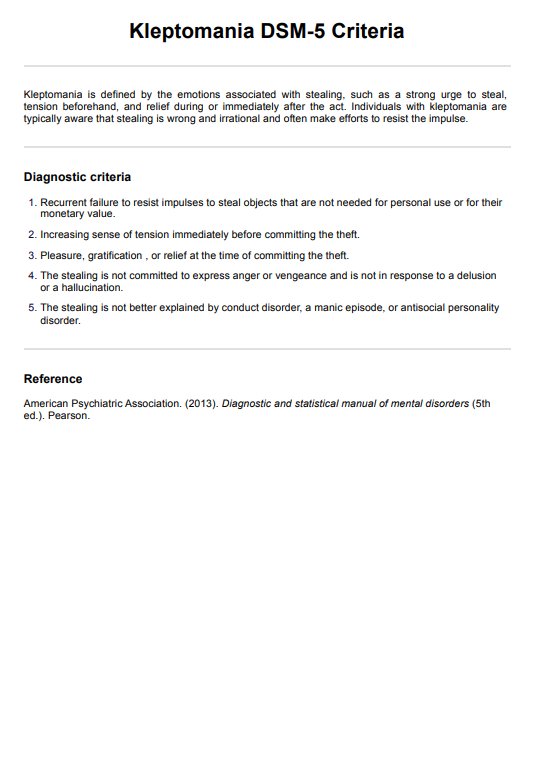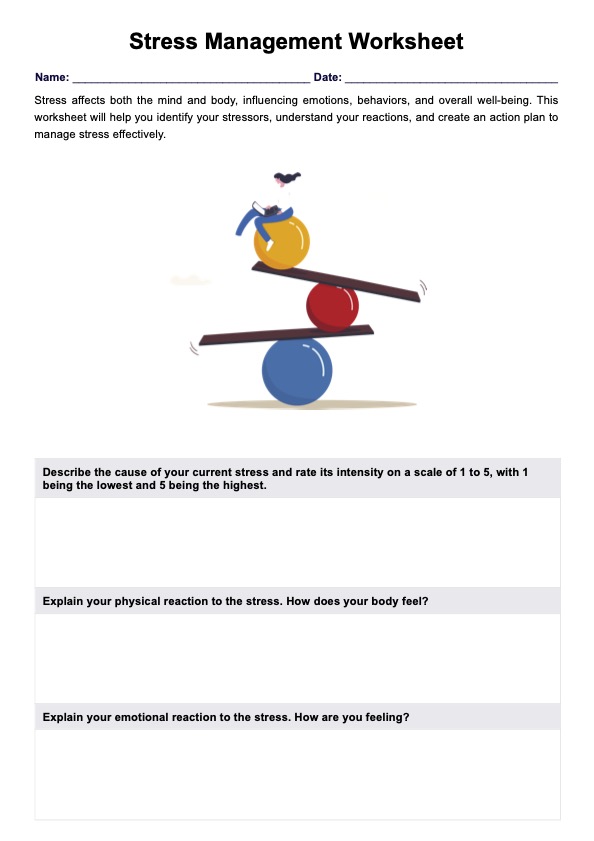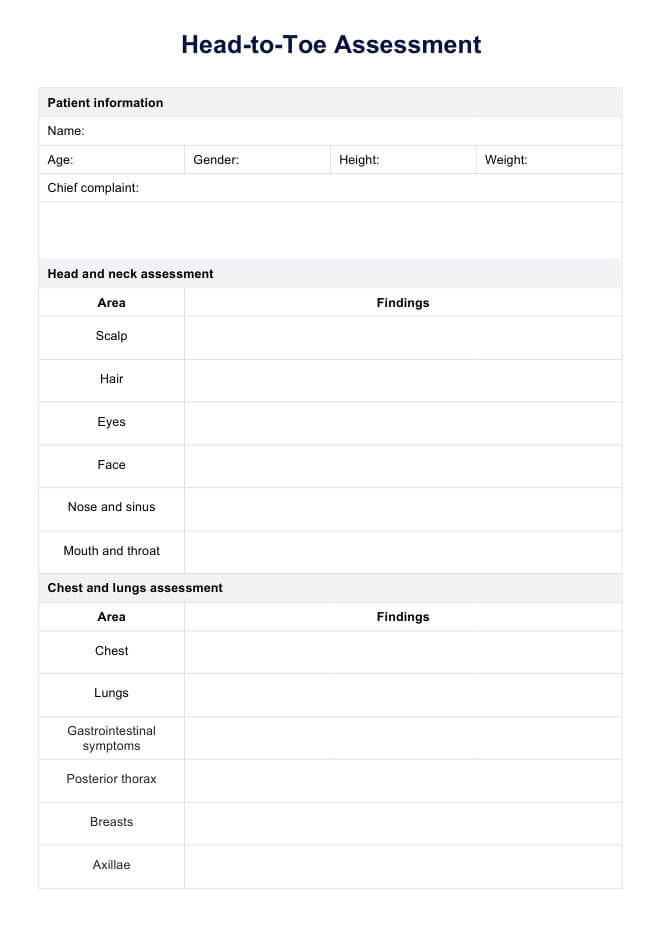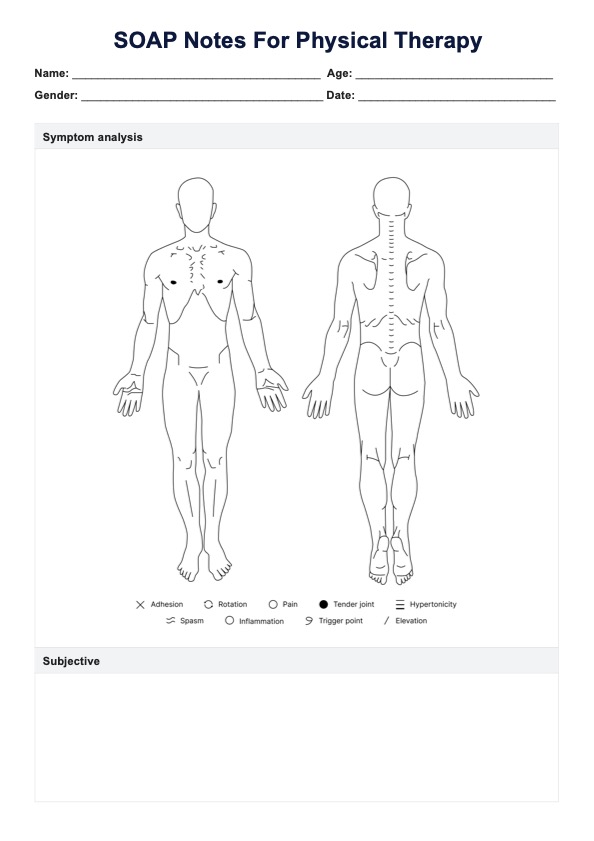Kleptomania is driven by an overwhelming urge to steal, often as a way to relieve psychological tension rather than out of need or desire for material gain. It is sometimes associated with other mental health conditions, including eating disorders, particularly major depressive disorder.

Kleptomania DSM-5 Criteria
Access our Kleptomania DSM-5 Criteria handout for clinical reference. Use this free resource for streamlined diagnoses in your practice.
Kleptomania DSM-5 Criteria Template
Commonly asked questions
With the proper treatment, many people can experience significant improvement in their symptoms. Without treatment, however, kleptomania can continue or worsen over time. Understanding the kleptomania clinical characteristics can help guide more effective diagnosis and management.
While shoplifting is typically motivated by the desire for gain, kleptomania is an impulsive behavior that isn't driven by need or personal benefit but rather by a compulsion that feels difficult to control.
EHR and practice management software
Get started for free
*No credit card required
Free
$0/usd
Unlimited clients
Telehealth
1GB of storage
Client portal text
Automated billing and online payments











